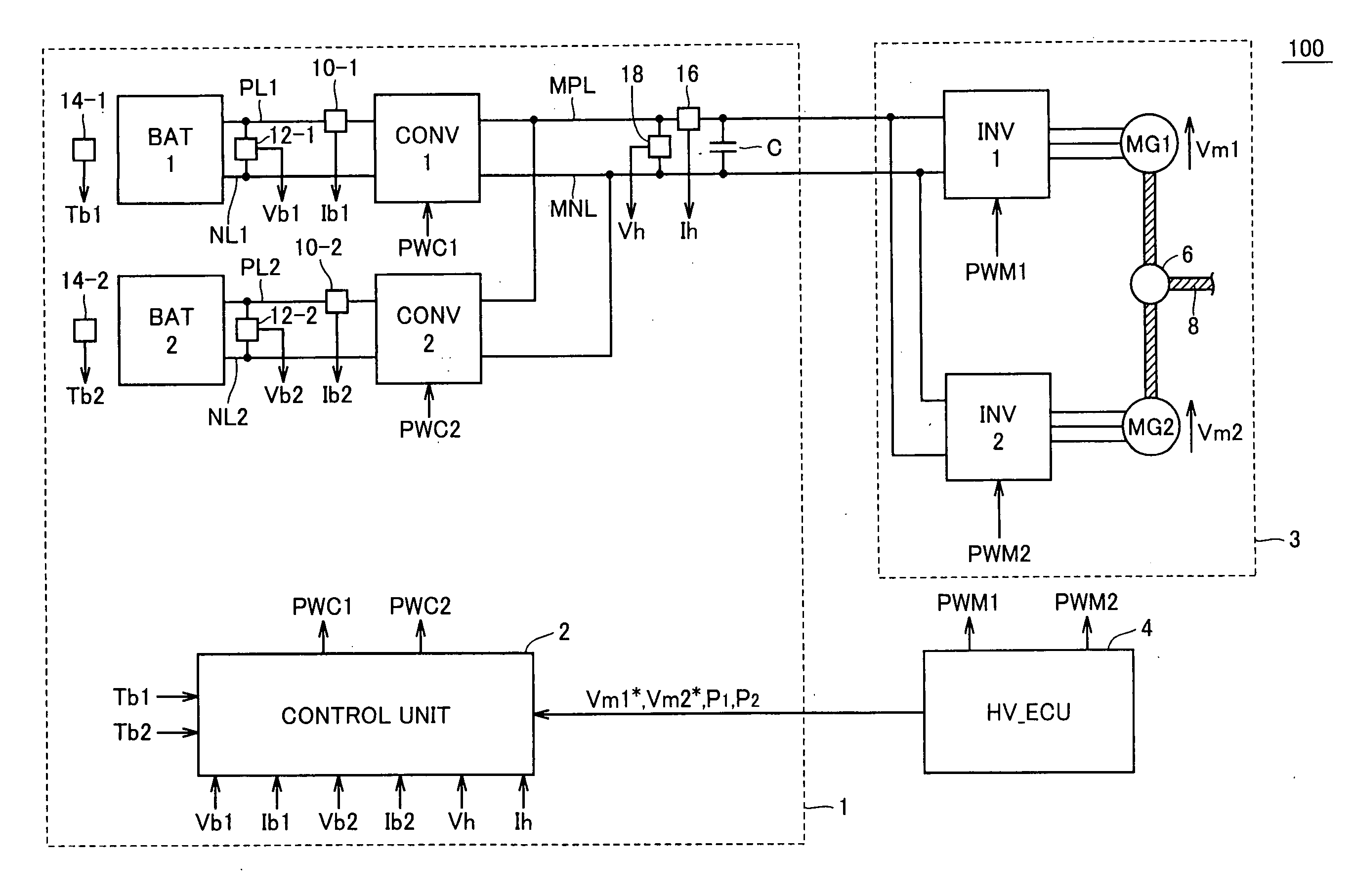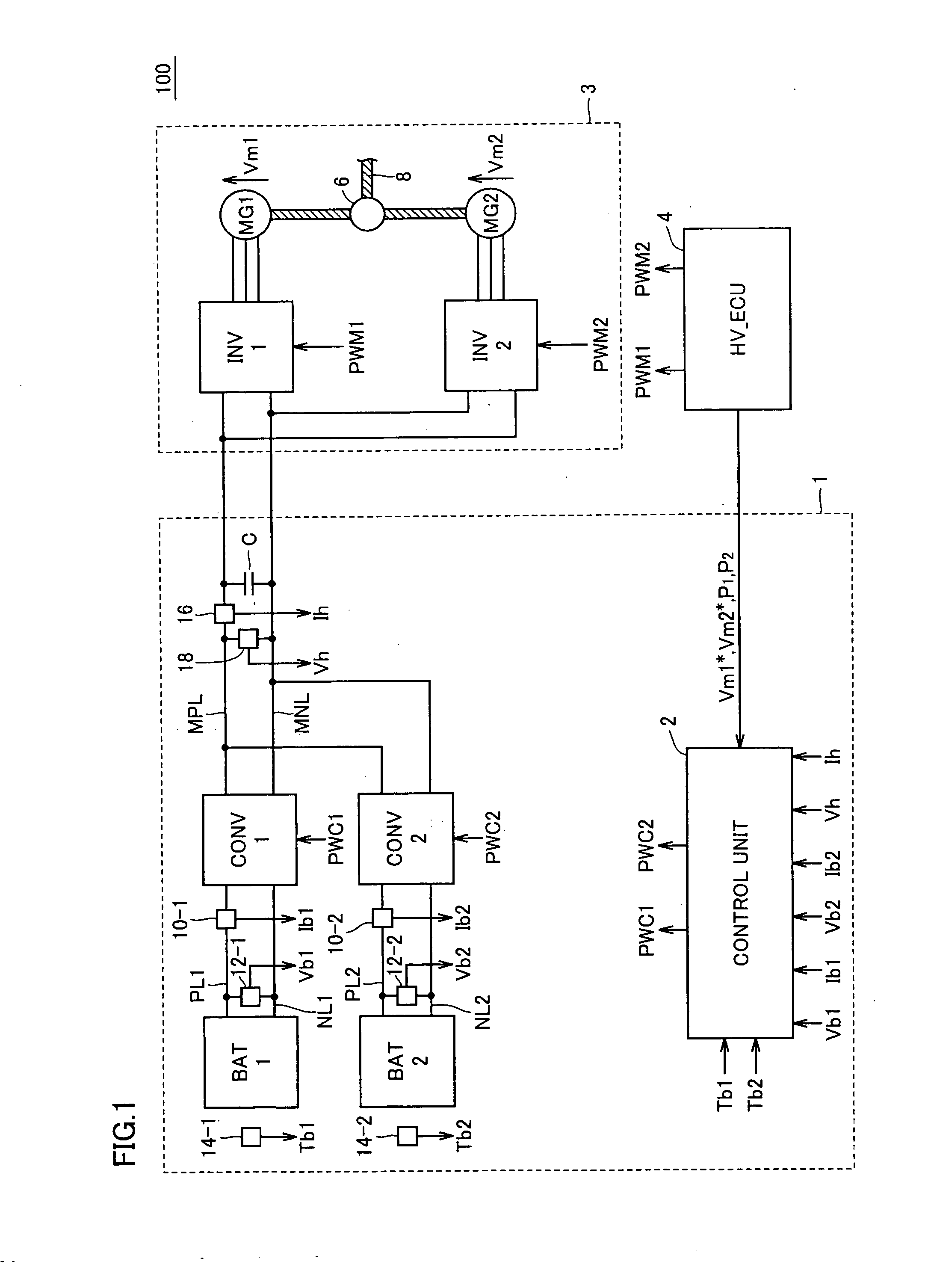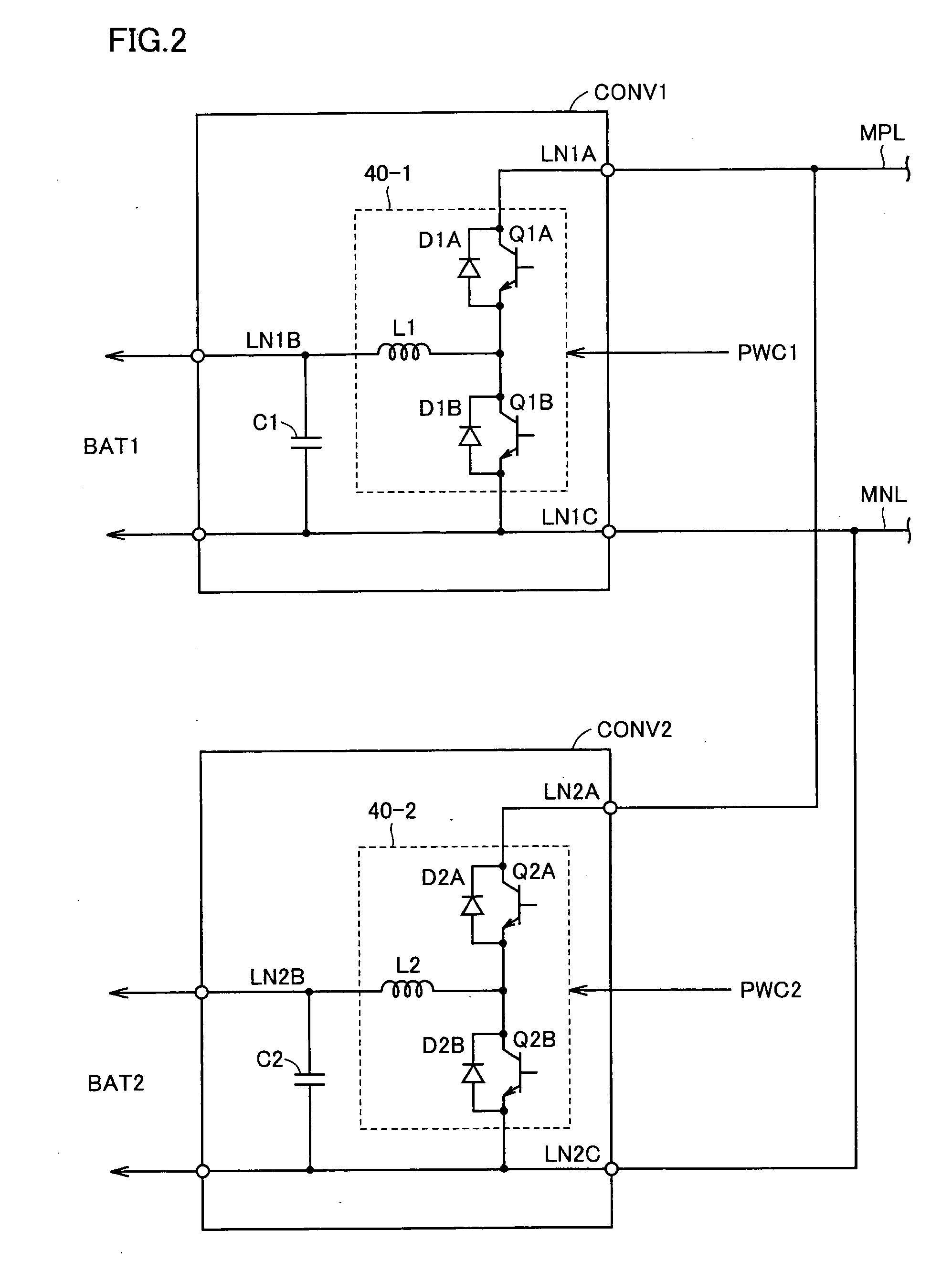Power Supply System and Vehicle
a power supply system and power supply technology, applied in the field of power supply systems, can solve the problems of unwanted circulation current flowing between, voltage difference between voltage conversion units, and different response characteristics of voltage conversion units, so as to achieve the effect of avoiding damage to power storage units
- Summary
- Abstract
- Description
- Claims
- Application Information
AI Technical Summary
Benefits of technology
Problems solved by technology
Method used
Image
Examples
first embodiment
[0039]Referring to FIG. 1, a vehicle 100 including a power supply system 1 in accordance with a first embodiment of the present invention will be described. The first embodiment illustrates a case where a drive force generation unit 3 generating drive force for vehicle 100 is used as an example of a load device. Drive force generation unit 3 receives electric power from power supply system 1 to generate drive force, and supplies the drive force to wheels (not shown) of vehicle 100, causing vehicle 100 to run.
[0040]In the first embodiment, power supply system 1 having two power storage units as an example of a plurality of power storage units will be described. Power supply system 1 supplies and receives DC power to and from drive force generation unit 3 through a main positive bus line MPL and a main negative bus line MNL.
[0041]Drive force generation unit 3 includes a first inverter INV1, a second inverter INV2, a first motor-generator MG1, and a second motor-generator MG2, and gene...
second embodiment
[0115]The present invention is applicable to a power supply system having three or more power storage units, in addition to the power supply system having two power storage units described above.
[0116]Referring to FIG. 7, a vehicle 100# including a power supply system 1# in accordance with a second embodiment of the present invention will be described. Since vehicle 100# includes power supply system 1# arranged instead of power supply system 1 in vehicle 100 shown in FIG. 1, the detailed description of drive force generation unit 3 will not be repeated. In the second embodiment of the present invention, power supply system 1# including N power storage units will be described.
[0117]Power supply system 1# includes converters CONV1, CONV2, . . . , CONVN, power storage units BAT1, BAT2, . . . , BATN, battery current value detection units 10-1, 10-2, . . . , 10-N, battery voltage value detection units 12-1, 12-2, . . . , 12-N, and battery temperature detection units 14-1, 14-2, . . . , 1...
PUM
 Login to View More
Login to View More Abstract
Description
Claims
Application Information
 Login to View More
Login to View More - R&D
- Intellectual Property
- Life Sciences
- Materials
- Tech Scout
- Unparalleled Data Quality
- Higher Quality Content
- 60% Fewer Hallucinations
Browse by: Latest US Patents, China's latest patents, Technical Efficacy Thesaurus, Application Domain, Technology Topic, Popular Technical Reports.
© 2025 PatSnap. All rights reserved.Legal|Privacy policy|Modern Slavery Act Transparency Statement|Sitemap|About US| Contact US: help@patsnap.com



